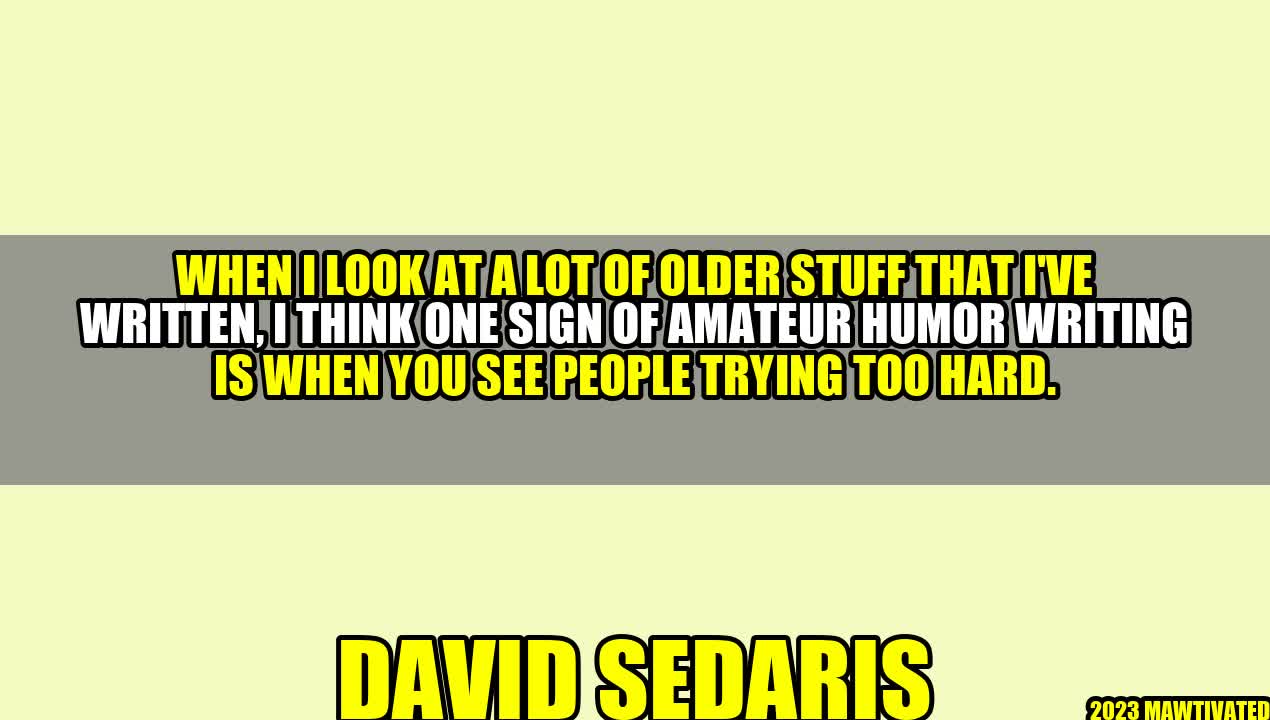The Art of Humor Writing: Tips From David Sedaris

Have you ever tried to write something funny, only to find that your jokes fell flat or worse, they came across as forced or cheesy? If so, you’re not alone. Writing humor is an art form, and it takes a lot of practice and skill to get it right. But don’t worry; with a little guidance from renowned humorist David Sedaris, you can learn the dos and don’ts of humor writing and avoid making amateur mistakes.
The Master of Humor: David Sedaris
David Sedaris is a beloved American author and humorist known for his witty and satirical essays that poke fun at everything from family life to culture clashes. He has published multiple best-selling books, including “Me Talk Pretty One Day,” “Dress Your Family in Corduroy and Denim,” and “Calypso.”
Sedaris is a master of written and spoken humor, and he has a keen sense of what makes people laugh. But he didn’t start out that way. Like many aspiring humor writers, he began his career with some amateur mistakes. In an interview with NPR, he talked about one of the biggest mistakes he used to make:
“When I look at a lot of older stuff that I’ve written, I think one sign of amateur humor writing is when you see people trying too hard.”
It’s a simple but powerful observation. When you’re trying too hard to be funny, it often shows. The best humor comes across as effortless and natural, not forced or over-the-top. So how can you avoid this pitfall and write humor that really resonates with your audience? Let’s take a closer look.
1. Know Your Audience
One of the biggest mistakes that amateur humor writers make is trying to be funny for everyone. But the truth is, not everyone has the same sense of humor. Some people love witty wordplay, while others prefer slapstick or observational humor. Some audience members may be offended by certain types of jokes, while others find them hilarious.
So, before you start writing, take some time to think about who your audience is and what type of humor they’re likely to appreciate. Are you writing for a specific age group or demographic? Are they typically more conservative or liberal? Do they have any shared experiences or cultural touchpoints that you can use to your advantage?
Once you have a good understanding of your audience, you can tailor your humor to their tastes. This doesn’t mean you should pander or compromise your own voice and style. It simply means that you should be aware of what your audience is likely to find funny and adjust your approach accordingly.
2. Practice, Practice, Practice
Humor writing is like any other skill; it takes practice to get good at it. So, don’t be afraid to experiment, to try out new jokes and see what works and what doesn’t. Keep a notebook of funny ideas, observations, and one-liners. Use your own life experiences as inspiration.
But don’t just write for yourself; share your work with others. Join a writing group or workshop where you can get feedback and constructive criticism from other writers. Share your work on social media or a personal blog. The more you put yourself out there, the more you’ll learn and grow as a humor writer.
3. Use the Element of Surprise
A good joke often relies on the element of surprise. This means that the punchline should catch your audience off guard in some way – whether it’s a clever twist, an unexpected turn of phrase, or a play on words.
To use the element of surprise effectively, you need to build up expectations or assumptions in your reader’s mind, and then subvert those expectations with your punchline. You can do this by setting up a joke with a familiar premise or scenario, and then taking it in an unexpected direction. Or, you can use incongruity or absurdity to create surprise.
Conclusion
In summary, writing humor is all about striking the right balance between effortlessness and skill. Don’t try too hard to be funny; let the humor come naturally from your own experiences and observations. Know your audience, practice, and use the element of surprise to keep them engaged and laughing.
So, go forth and write some hilarious essays, stories, or scripts. With these tips from David Sedaris, you can master the art of humor writing and become the next great humorist.
Hashtags
#humorwriting #DavidSedaris #comedywriting #creativewriting #writingtips
SEO Keywords
Humor writing, David Sedaris, comedy writing, creative writing, writing tips
Article Category
Writing Tips

Curated by Team Akash.Mittal.Blog
Share on Twitter
Share on LinkedIn